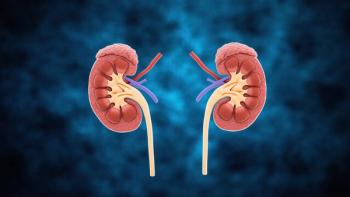
Tapping Into the Problem: CKD Risk From Everyday Water
More than 90% of people in the U.S. get their water from community water systems that utilize chlorine to kill germs. Trihalomethanes (THMs) are a category of long-regulated compounds that are linked to bladder cancer and bad reproductive results. They are a consequence of this activity. Brominated THMs, which are found in higher amounts in coastal and high-bromide source waters, have been proven in animal models to harm the kidneys, make filtration less effective, and cause tubular injury.
Notwithstanding this toxicological data, there exists a significant deficiency of longitudinal human research correlating THM exposure to renal outcomes. The authors postulated that prolonged, real-world exposure to THMs, especially brominated chemicals, could elevate the risk of CKD, even at levels below the U.S. Environmental Protection Agency's maximum contamination threshold (80 micrograms per liter for total THMs). The California Teachers Study, a substantial and established cohort with comprehensive home histories and water quality data, offered a unique opportunity to evaluate this hypothesis over an extensive period of follow-up exceeding a decade.
The study looked at 89,320 women, who were 50 years old on average and did not have CKD at the start. Long-term, time-weighted average concentrations of THMs in participants' CWS from 1995 to 2005 were associated with the incidence of CKD from 2005 to 2018.
A dose-response relationship indicated that elevated total THM levels were associated with an increased risk of moderate-to-end-stage CKD, with the most pronounced gradient observed for brominated THMs. When brominated THM exposure was at or above the 95th percentile (around 30 micrograms per liter), the risk of CKD was 43% greater than when it was at the lowest quartile.
The mixture study showed that brominated THMs made up 52.9% of the total risk from a mixture of contaminants that included uranium and arsenic. Chloroform only made up 5.5% of the total danger. A heightened risk was detected well below the existing 80 micrograms per liter regulatory limit, indicating that the level may not safeguard renal health.
These relationships remained significant after controlling for sociodemographic variables, BMI, smoking status, and neighborhood socioeconomic status, and were robust in sensitivity analyses that considered competing mortality risks.
From a managed care perspective, CKD is expensive, progressive, and frequently asymptomatic until advanced stages. Finding environmental risk factors that can be changed is in line with public health policies that aim to lower incidence and slow development.
For health plans and health systems in coastal or urban areas with bromide-rich water sources, environmental risk profiling could improve current CKD screening algorithms, especially for members who have other risk factors.
The results indicate that the "safe" threshold for total THMs may insufficiently safeguard renal health, especially in populations experiencing prolonged low-level exposure. For public health, this shows a gap between present rules and new findings. This means that more monitoring, toxicology research, and possibly tougher or compound-specific limitations are needed.
Newsletter
Get the latest industry news, event updates, and more from Managed healthcare Executive.






















































